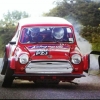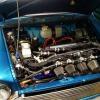Anyone got any practical experience with these types of printers? Got a line on a 2nd hand industrial machine but not sure if it's what I need. I'd like to take CAD part and print them in plastic before committing to more expensive materials and/or be able to print 1 of small parts.

Sla 3D Printing
#1

Posted 23 September 2020 - 07:01 PM
#2

Posted 23 September 2020 - 07:44 PM
i use FDM , SLA has usually got the views of most as not entry level, from what ive seen some of them provide exquisite resolution.
Problems are resins can smell , require post curing ( dousing it in uv to ensure its fully cured) , expensive resin .
EDIT- just quick look at resin, looks to be ~ £50 a L, im guessing a large print area is gonna take a bottle to fill
Edited by phillrulz, 23 September 2020 - 07:50 PM.
#3

Posted 23 September 2020 - 08:23 PM
I have a small SLA printer (not industrial) and it does produce some fantastic detail but the hassle of all the cleaning and safety involved I always look at other processes such as FDM or even sub it out to SLS first.
FDM is far more user friendly and easier to use. And you can produce some great detail, but generally not upto SLA standard.
The other issue with SLA is you don't know if it's printing correctly until the bed lifts up enough to see the part. So you can print for an hour and find there's nothing there. Then you have to clean it down and start again in the hope it works.
It depends on what type of parts you want to make, the detail and material you want as to whether SLA is good for you. Just be prepared to spend time cleaning and try not to get the resin on your skin. I never found the smell that bad but the fumes are not good for you.
30 odd years ago SLA was the new process and I use to have prototypes made before making mould tools. The parts were always very brittle but good detail. Things have moved on and there are many more materials to choose from. Now I mainly use SLS or FDM for prototypes.
#4

Posted 23 September 2020 - 09:24 PM
Thank guys! What I am hearing is not to overlook FDM. Having done a little more research it would appear that the machine in question (an Ultra 3SP) is DLP not SLA. Either way I'm guessing it has the same drawbacks of fumes, cleanups?
#5

Posted 23 September 2020 - 09:37 PM
Sorry DLP is what I have but the same princples apply. The light source is different but the same messy resin and cleaning still applies.
#6

Posted 24 September 2020 - 12:10 PM
I have quite a bit of experience in printing small precise parts using SLA printing (Formlabs Form 2) as well as lots of experience printing in FDM with a couple of printers, the one I have had the most success with was my Creality Cr-10.
SLA printing is absolutely fantastic for small very detailed parts, and the resins available from formlabs are pretty good, I largely used their standard black resin for most things as it worked the best for what I was using it for, they do a tough resin which is less brittle, but I found it warped quite a bit during printing as well as curing which didn't work well for the jig work I was using it for. The print times for larger parts however was pretty abysmal due to it working at a very fine resolution. This does result in fantastic quality parts though with no visible layer lines. Post processing of parts is a bit of a pain and the supports required for most prints result in needing to sand parts before use.
For larger parts I tend to use FDM printing as you can chuck a larger dia nozzle on and ramp up the layer heights, granted you will see layer lines but for drafting thats fine and if you want better resolution on the finish part then printing with a 0.4mm nozzle and at 0.08 or 0.12mm layer heights gives a very acceptable finish. Also you can print parts with different amounts of infill which helps speed up print time as well as adding strength in certain situations, this isn't something you can do with SLA easily due to leaving uncured resin in pockets inside the part .Generally the post processing on FDM prints is less than SLA since you have no need to wash or cure the parts and it's easier to design parts for printing without the need for supports. PLA is a pretty versatile material to print in on FDM and will do most things you need without being difficult to print, if you need more strength then ABS and PETG are good alternatives and are less brittle but they're more difficult to print and will need an enclosed chamber to print ABS for instance.
#7

Posted 24 September 2020 - 07:22 PM
Thanks guys, I'm starting to understand why this machine sold so cheap. I'll take another look at FDM. Any recommendations?
0 user(s) are reading this topic
0 members, 0 guests, 0 anonymous users















